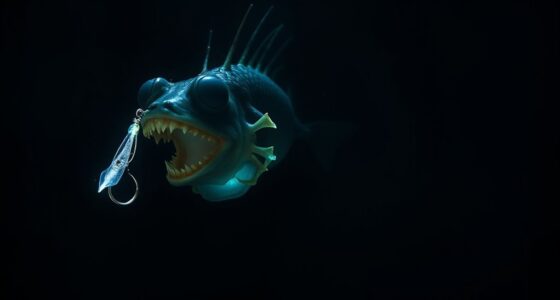The giant squid has long fascinated humanity, shrouded in mystery and myth. Despite centuries of stories describing monstrous encounters, little is known about this elusive creature’s true nature. Advances in technology are now revealing secrets hidden in the depths. As you explore the facts and legends, you’ll discover why the giant squid remains one of the ocean’s greatest enigmas, and what recent discoveries suggest about its place in the marine world.
The Origins of the Giant Squid Mythology
Have you ever wondered how the legend of the giant squid began? Long before scientists studied these creatures, sailors told stories of enormous, elusive monsters lurking in the deep. Sightings of massive tentacles or mysterious carcasses fueled fears and fascination.
In the 19th century, reports of giant squid washed ashore or caught on fishing lines sparked curiosity worldwide. These tales grew more sensational over time, blending fact and myth.
Early explorers and whalers contributed to the legend, often describing encounters with creatures that seemed too fantastic to be real. Over centuries, these stories cemented the giant squid as a symbol of the unknown, deep-sea terrors lurking beneath the ocean’s surface.
The myth persisted, shaping how we perceive these mysterious giants today, especially as new discoveries and marine biology research continue to reveal their true nature.
Anatomy and Physical Features of Architeuthis
The giant squid, scientifically known as Architeuthis, boasts an impressive and complex anatomy that enables it to thrive in the deep ocean. Its elongated, cylindrical body can reach up to 43 feet, with a mantle housing vital organs. You’ll notice its large, specialized eyes—some of the biggest in the animal kingdom—giving it excellent vision in darkness. Its eight arms and two longer tentacles are lined with powerful suckers and hooks, perfect for capturing prey. The beak, hidden within its arms, slices through flesh efficiently. Its internal shell, called a pen, supports its structure while remaining lightweight. Brightly colored chromatophores allow it to change hue, helping with camouflage and communication. Every feature is finely tuned for survival in one of the planet’s most challenging environments. Additionally, recent studies highlight its ability to navigate the vast and mysterious deep sea, showcasing the incredible adaptations that have evolved over millions of years.
Deep-Sea Habitat and Range
Deep beneath the ocean’s surface, the giant squid inhabits the mysterious and largely unexplored depths of the mesopelagic and bathypelagic zones, typically ranging from 300 to 2,200 meters below sea level. These zones provide the perfect environment for their elusive lifestyle, with limited light and scarce food sources. The giant squid’s range isn’t confined to a specific area; instead, it spans a broad, deep-sea habitat where they tend to stay at depths that protect them from predators and surface disturbances. Despite their vast range, sightings are rare, making their exact distribution and population status difficult to determine biodiversity hotspots.
Behavior and Feeding Habits
Although much remains a mystery, we know that giant squids are active predators in their deep-sea environment. They hunt primarily at night, using their large eyes to spot prey in darkness. You’d find them stalking fish, small squids, and other deep-sea creatures, ambushing them with quick tentacle strikes. Their tentacles are lined with powerful suckers and hooks, helping them grasp and hold onto prey securely. Once caught, they use their beak-like mouth to tear food apart. Giant squids are also known for their impressive speed and agility, allowing them to chase down fast-moving prey. Despite limited direct observations, evidence suggests they’re highly skilled hunters, relying on stealth and their keen senses to survive in the abyssal depths. Recent advances in neural networks have improved scientists’ ability to analyze deep-sea video footage, providing new insights into their hunting behaviors.
Reproductive Strategies and Lifecycle
Giant squids reproduce by releasing eggs and sperm into the water, where fertilization occurs externally. During mating, males transfer spermatophores—packets of sperm—to females using a specialized arm called a hectocotylus.
Once fertilized, eggs are released into the deep-sea environment, often attached to floating objects or drift freely. Females can produce thousands of eggs in a single reproductive cycle, but they typically reproduce only once in their lifetime.
After fertilization, the eggs develop slowly in the cold, dark waters, taking months to hatch. The hatchlings emerge as tiny, primitive squids that immediately begin their journey through the deep ocean. Developmental stages are crucial for understanding their survival strategies in such a harsh environment.
This reproductive strategy ensures the survival of the species despite the immense challenges of their deep-sea habitat.
Challenges in Studying the Giant Squid
Studying the giant squid presents numerous challenges because these elusive creatures inhabit the remote, extreme depths of the ocean where sunlight never reaches. You can’t simply dive down and observe them directly, as pressure, darkness, and vast distance make encounters rare. Their deep-sea environment is difficult to access, and equipment must withstand extreme conditions. This makes capturing clear images or footage incredibly hard. Additionally, giant squids spend most of their lives at depths beyond human reach, limiting opportunities for direct study. You also face unpredictability; they move quickly and are often solitary, further complicating efforts to track or study their behavior. To better understand their natural habitat, researchers often rely on specialized marine exploration technology, which is expensive and complex to operate.
Recent Breakthroughs in Observation Technology
Recent advances in observation technology have revolutionized how researchers study the elusive giant squid. High-definition deep-sea cameras and remotely operated vehicles (ROVs) now capture stunning images and videos in the squid’s natural habitat, providing unprecedented insights. These tools allow scientists to observe behaviors and interactions that were previously impossible to document. AI security algorithms are also being utilized to analyze large datasets collected from these technologies, enhancing data interpretation and pattern recognition. Bioluminescent lighting systems help illuminate dark ocean depths without disturbing marine life. Additionally, specialized sonar technology detects and tracks giant squids from afar, enabling researchers to pinpoint their locations more accurately. These breakthroughs reduce reliance on chance encounters and enable long-term monitoring. As a result, our understanding of the giant squid’s behavior, movement patterns, and environment has significantly advanced, bringing us closer to unraveling the mysteries surrounding this deep-sea marvel.
The Role of the Giant Squid in Marine Ecosystems
The giant squid plays a vital role in maintaining the balance of deep-sea ecosystems by regulating populations of its prey and serving as prey for larger predators.
As a top predator, it controls populations of fish, crustaceans, and cephalopods, preventing any species from becoming overly dominant. This balance supports biodiversity and helps sustain the health of the ecosystem.
In turn, the giant squid itself becomes prey for colossal predators like sperm whales, linking it into the broader food web. Its feeding habits influence nutrient cycling and energy transfer within the deep sea. Additionally, understanding the ecological significance of the giant squid highlights its importance in the overall health of marine environments.
Encounters With Humanity and Cultural Significance
Throughout history, humans have been captivated by the mysterious presence of the giant squid, inspiring stories, legends, and artistic representations. Tales of monstrous sea creatures, like the kraken, often depicted the squid as a formidable and terrifying force of nature. These stories fueled maritime folklore and influenced sailors’ fears and awe. The giant squid’s elusive nature kept it at the edge of human understanding, adding to its mythic status. Artistic works, from ancient carvings to modern literature, celebrate its grandeur and mystery. Even today, the squid symbolizes the unknown depths of the ocean and humanity’s fascination with the unexplored. Its cultural significance endures through stories, media, and symbolism, reminding us of the ocean’s secrets yet to be uncovered. Exploring the floating on water concept highlights how the squid’s natural habitat and behavior continue to mystify and inspire.
Ongoing Mysteries and Future Research Directions
Despite advances in marine technology, many mysteries of the giant squid remain unresolved, keeping scientists eager to explore further. You can expect future research to focus on capturing more live specimens to study their behavior in natural habitats.
New deep-sea exploration tools, like advanced remotely operated vehicles and high-resolution cameras, will help reveal their elusive behaviors and physiology. Genetic analysis may unlock secrets about their evolution and adaptation to deep-sea environments.
You might also see efforts to understand their reproductive habits and feeding strategies. As technology progresses, researchers aim to fill gaps in knowledge about their life cycle and ecological role.
Additionally, nutritional information about their diet could provide insights into their ecological niche and interactions within the deep-sea food web. The ongoing quest to uncover these secrets promises to deepen our understanding of this mysterious giant and its place in ocean ecosystems.
Conclusion
As you explore the depths of the giant squid’s world, you realize there’s still so much to discover. These mysterious creatures remind you of the ocean’s vastness and its hidden secrets. With every technological breakthrough, you’re getting closer to understanding their true nature and ecological importance. Keep your curiosity alive—future research promises even more astonishing revelations about these awe-inspiring giants lurking in the dark, uncharted waters of our planet.








